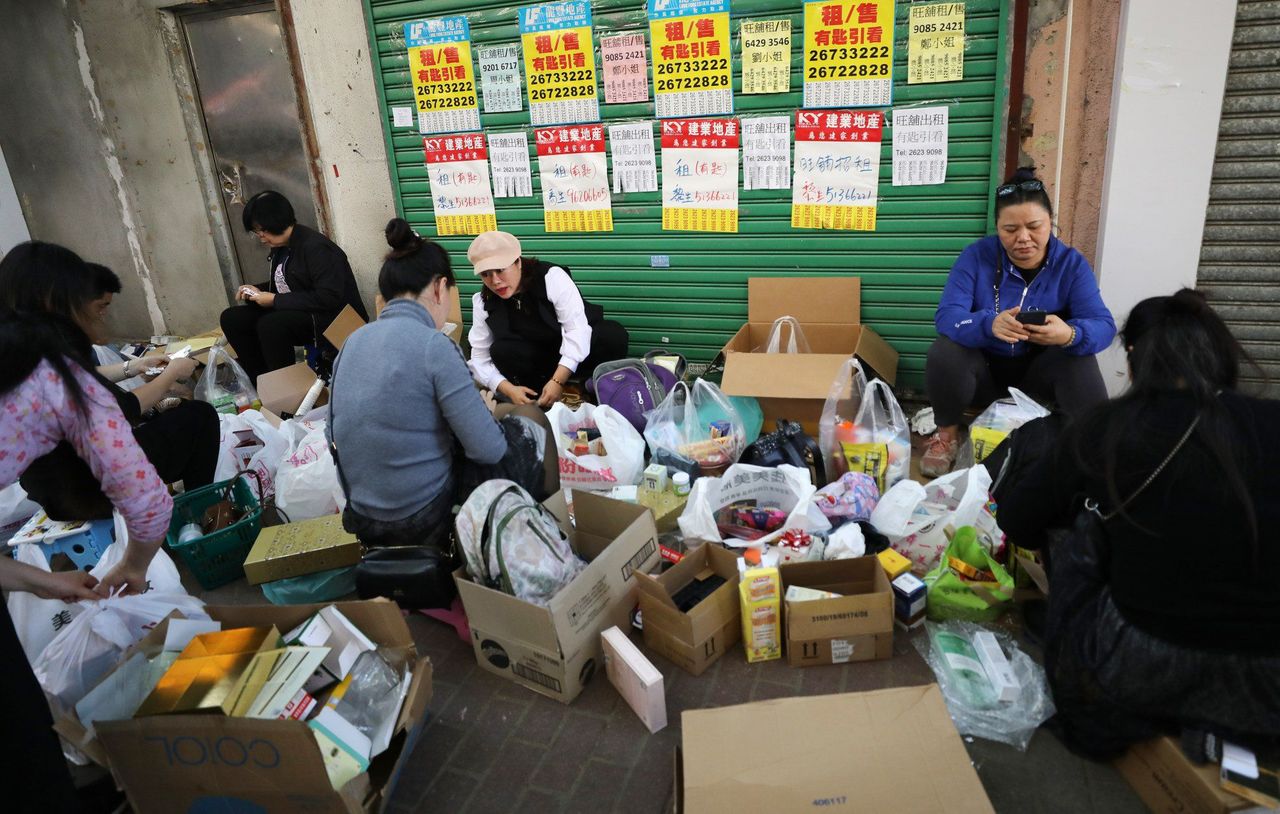The relaxation of travel curbs will bring tourists, including those from the mainland, back to the city. Hong Kong must try to avoid a repeat of the post-Sars problems, such as a flood of parallel traders.
After removing nearly all social distancing measures and announcing the aim of reopening the border with mainland China this month, Hong Kong is gradually returning to a semblance of normality. While these are positive moves, they could also mean that some pre-Covid problems could also make a comeback. This could be Hong Kong’s chance to rethink and reset certain policies.
When the Individual Visit Scheme was introduced in July 2003 following the end of the severe acute respiratory syndrome (Sars) outbreak, empty streets became overcrowded with armies of parallel traders towing luggage between pharmacies and cosmetics shops. In capitalising on and catering to the influx of tourists from the mainland, there was a 1,500 per cent surge in the number of these shops between 2004 and 2013.
Seeing many cookie-cutter tenants reap greater profits thanks to the tourists, landlords were more than happy to increase their share of wealth by raising rents across the board, which meant forcing out less profitable shops that catered to the local community.
The plan to rescue the economy was simple. Opening the tap of tourists to fill Hong Kong’s tiny shot glass would revitalise the economy instantly.
But a shot glass can only hold so much. Once the glass is full, the uninterrupted flow of tourists would spill out uncontrollably, leaving behind a mess of stressed social infrastructure and resentment.
When the tap became too addictive and profitable, no one could afford to slow down the flow. This tap not only quenched thirst, it had become an economic lifeline.
 Tourists from the mainland with their shopping in Sheung Shui on January 4, 2020.
Tourists from the mainland with their shopping in Sheung Shui on January 4, 2020.
The swarms of tourists that once plagued Tung Chung when the Hong Kong-Zhuhai-Macau Bridge opened had now vanished. With some landlords refusing to make significant decreases in rent to help their tenants weather the storm, once serviceable shopping malls turned into dead ones.
Some residents appreciated the return of breathing space, while others lost their jobs because their work was intertwined with tourists.
In all fairness, tourists have and will always play an important role in Hong Kong. We embrace their support of businesses and the benefits that cultural exchange brings. There is no question that they are a part of the solution moving forward.
Nonetheless, returning to the pre-Covid status quo of opening the tap without restraint may not cure all the problems. Given the physical limitations, even large-scale projects such as the Lantau Tomorrow Vision development will not expand the shot glass into a swimming pool.
The unfortunate reality is that the tap should be carefully controlled as there is a limit in our tourism-carrying capacity. Any limit on quantity will naturally be counterbalanced by quality. With less crowds, there would be more space for everyone to enjoy Hong Kong’s showcase of hospitality, vibrant arts and culture, diverse gastronomy, local dialect and beautiful skyline.
The key to healthy development is to keep the shot glass nearly full and to avoid any spills. Despite the fact that e-commerce grew rapidly globally during the pandemic and retail behaviour has shifted from offline to online, Hong Kong remains attractive to visitors for goods and everyday commodities due to the absence of taxes and duties.
Therefore, the focus should not be on catering to tourists and landlords by saturating our retail industries with excessive profit-making endeavours, but to nurture this ecosystem for the benefit of both tourists and residents. The development of the West Kowloon Cultural District is an example of this.
If Hong Kong is to maintain sustainable economic growth with the rest of the Greater Bay Area, it is the people who live and work here that must be an integral part of the solution. A resilient Hong Kong should be cautious yet optimistic and seize this opportunity to rethink and reset before the tap is turned on again.















